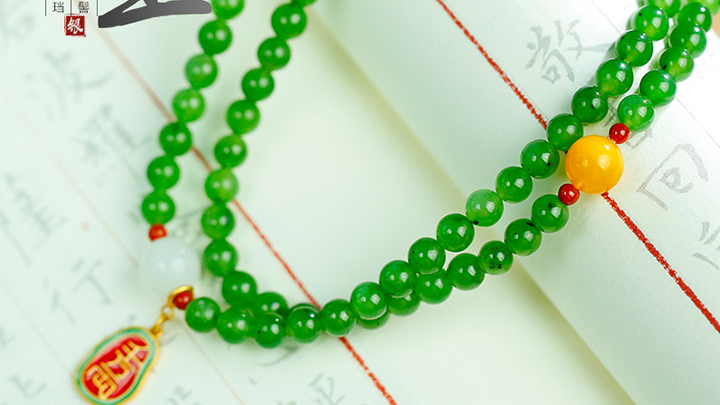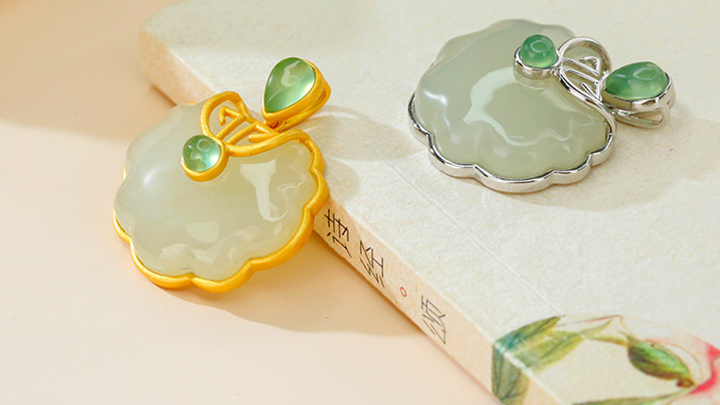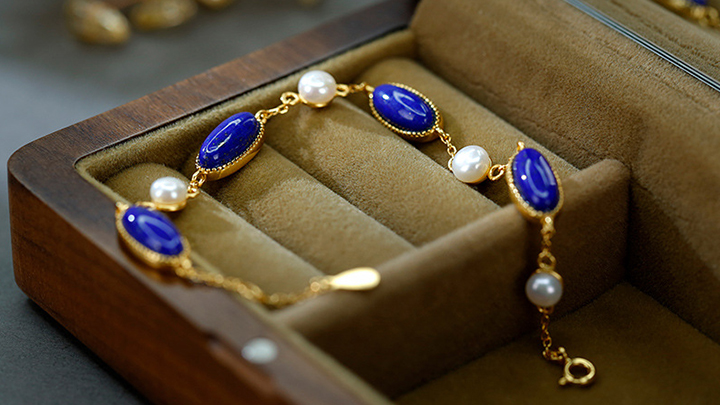How to Distinguish Genuine Hetian Jade from Imitations
Hetian jade, also known as Hetian Yu or Hetian nephrite, is a highly prized jade variety originating from the Hetian region in Xinjiang, China. Its value and cultural significance make it essential to know how to distinguish genuine Hetian jade from imitations and lesser-quality stones. Here are some key methods and characteristics to help you identify authentic Hetian jade:
1. Color and Appearance
Color:
- Genuine Hetian Jade: Authentic Hetian jade typically comes in shades ranging from creamy white to pale green, with a smooth, even coloration. High-quality Hetian jade can exhibit a translucent quality and may have subtle variations in color.
- Imitations: Imitations may have overly bright, uniform, or unnatural colors. Some may be dyed to mimic the appearance of Hetian jade but will lack the subtlety and depth of genuine stones.
Surface and Texture:
- Genuine Hetian Jade: The surface of genuine Hetian jade is usually smooth and polished, with a waxy to slightly greasy texture. It often has a soft, smooth feel to the touch.
- Imitations: Fake or lower-quality jades may have a more plastic or resin-like texture. They might feel too smooth or too rough compared to the authentic stone.
2. Hardness and Density
Hardness:
- Genuine Hetian Jade: Hetian jade is a type of nephrite and has a hardness of about 6 to 6.5 on the Mohs scale. It is relatively tough but not as hard as jadeite (which is 6.5 to 7 on the Mohs scale).
- Imitations: Some imitations might be softer and can be scratched more easily than genuine Hetian jade. Performing a scratch test can be useful, but it should be done with caution to avoid damaging the stone.
Density:
- Genuine Hetian Jade: Hetian jade has a specific gravity of about 2.9 to 3.1, which makes it denser than many imitation materials. When comparing to similar-sized stones, genuine Hetian jade will feel heavier.
- Imitations: Synthetic or lower-quality jade may have a different density, and often feels lighter or heavier than genuine Hetian jade.
3. Transparency and Lustre
Transparency:
- Genuine Hetian Jade: High-quality Hetian jade can be slightly translucent, especially in thinner sections. However, it should not be transparent. The translucency gives it a distinctive glow.
- Imitations: Imitations or treated stones often lack the same level of translucency and may appear more opaque.
Lustre:
- Genuine Hetian Jade: Authentic Hetian jade exhibits a smooth, lustrous finish with a natural sheen that is not too glossy or reflective. It often has a soft, milky glow.
- Imitations: Fake jade may have an artificial, overly shiny appearance. The lustre might appear too bright or inconsistent.
4. Inclusions and Veins
Inclusions:
- Genuine Hetian Jade: Authentic Hetian jade may contain natural inclusions and veins, which can be white or grayish in color. These inclusions are a natural part of the stone and can add to its uniqueness.
- Imitations: Imitations might have irregular or artificial inclusions. Some may include visible air bubbles or inconsistencies that are not typical of genuine Hetian jade.
Veins:
- Genuine Hetian Jade: Hetian jade often has fine, natural veins that are subtle and blend smoothly with the overall color of the jade. These veins are usually evenly distributed.
- Imitations: Fake stones might have more pronounced or uneven veins that look artificial or are not consistent with natural patterns.
5. Price and Provenance
Price:
- Genuine Hetian Jade: High-quality Hetian jade is relatively expensive due to its rarity and cultural value. If a piece is priced unusually low, it may not be genuine.
- Imitations: Imitations are often priced much lower than genuine Hetian jade. Be wary of deals that seem too good to be true.
Provenance:
- Genuine Hetian Jade: Reputable sellers of Hetian jade should be able to provide information about the stone’s origin and authenticity. Look for certificates of authenticity from recognized gemological institutions.
- Imitations: Imitations may lack credible provenance or documentation, and sellers might be unwilling or unable to provide detailed information about the source of the jade.
Conclusion
Distinguishing genuine Hetian jade from imitations involves assessing color, texture, hardness, density, transparency, lustre, inclusions, veins, and provenance. By carefully evaluating these characteristics, you can better ensure that you are purchasing or wearing authentic Hetian jade. When in doubt, seek advice from knowledgeable gemologists or reputable dealers to verify the authenticity of the jade.




